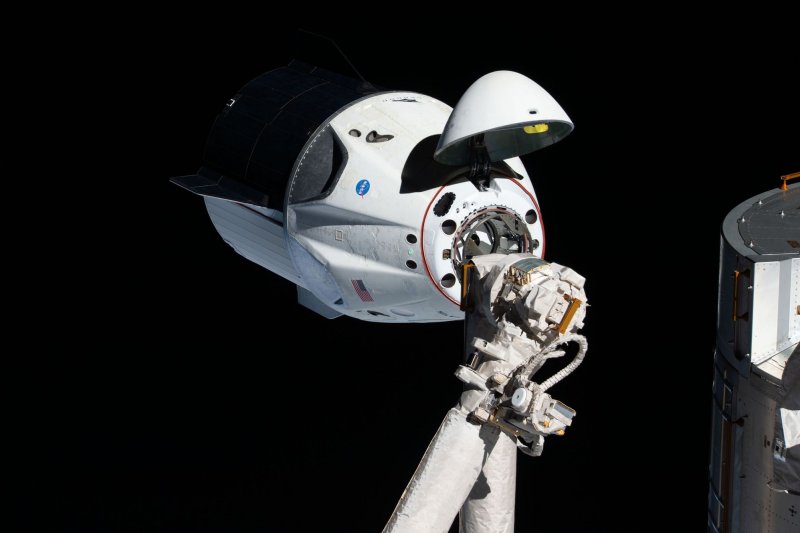NASA astronauts will test new SpaceX capsule, execute spacewalks
by Paul Brinkmann


ORLANDO, Fla., May 25 (UPI) -- Astronauts heading to space from U.S. soil for the first time in nine years will test SpaceX's Crew Dragon capsule and perform spacewalks on the International Space Station.
The spacecraft, which will carry people for the first time, is scheduled to lift off at 4:33 p.m. EDT Wednesday and fly for 19 hours before docking at the space station.
Weather remains an uncertainty that day, however, with rain and a heavy cloud cover predicted. If the launch is postponed, NASA has said the next opportunity would come Saturday.
The capsule could make it to the space station quicker than in 19 hours, but astronauts Bob Behnken and Doug Hurley are to conduct several tests, including flying Crew Dragon manually with its unique, high-tech touchscreen panel.
"This is a test flight. There are checkouts that we're doing along the way," said Kathy Leuders, NASA's manager of the Commercial Crew Program. "So we picked a day and time when we can do that on the way to the ISS. This is a really, really important flight for us, and we've got two great test pilots."
The first manual test will occur on the evening of the launch. Astronauts are to conduct another manual test briefly as they approach the space station for docking the next morning.
Astronauts also will try out various life-support features on the capsule, including meals -- unheated, according to NASA.
"Bob and Doug are gonna get the chance to try sleeping in the Dragon, also," said Benjamin Reed, SpaceX's director of crew mission management.
Upon return, the astronauts will pack the capsule with a few space experiments that have been aboard the space station, and then experience the first splashdown of a capsule carrying humans since the Apollo era, in the Atlantic Ocean off the coast of Florida.
The mission originally called for only a few days aboard the space station, but NASA announced that would be extended due to necessary space station maintenance. Behnken and Hurley will be there for one to four months, depending on how quickly the work is accomplished.
Behnken is set to participate in five spacewalks with astronaut Chris Cassidy, who already is on the space station with two Russian cosmonauts. Hurley will support the two by controlling robotic systems while inside orbiting laboratory.
Four of the spacewalks are required to replace the space station's nickel-hydrogen batteries, which are charged by immense solar panels.
Cassidy and Behnken also are to install new equipment onto the European Space Agency's module, preparing it for a new platform that will host scientific experiments.
A fifth spacewalk will install new communications upgrades on the European module.
A sixth spacewalk is possible later in the summer, NASA said.